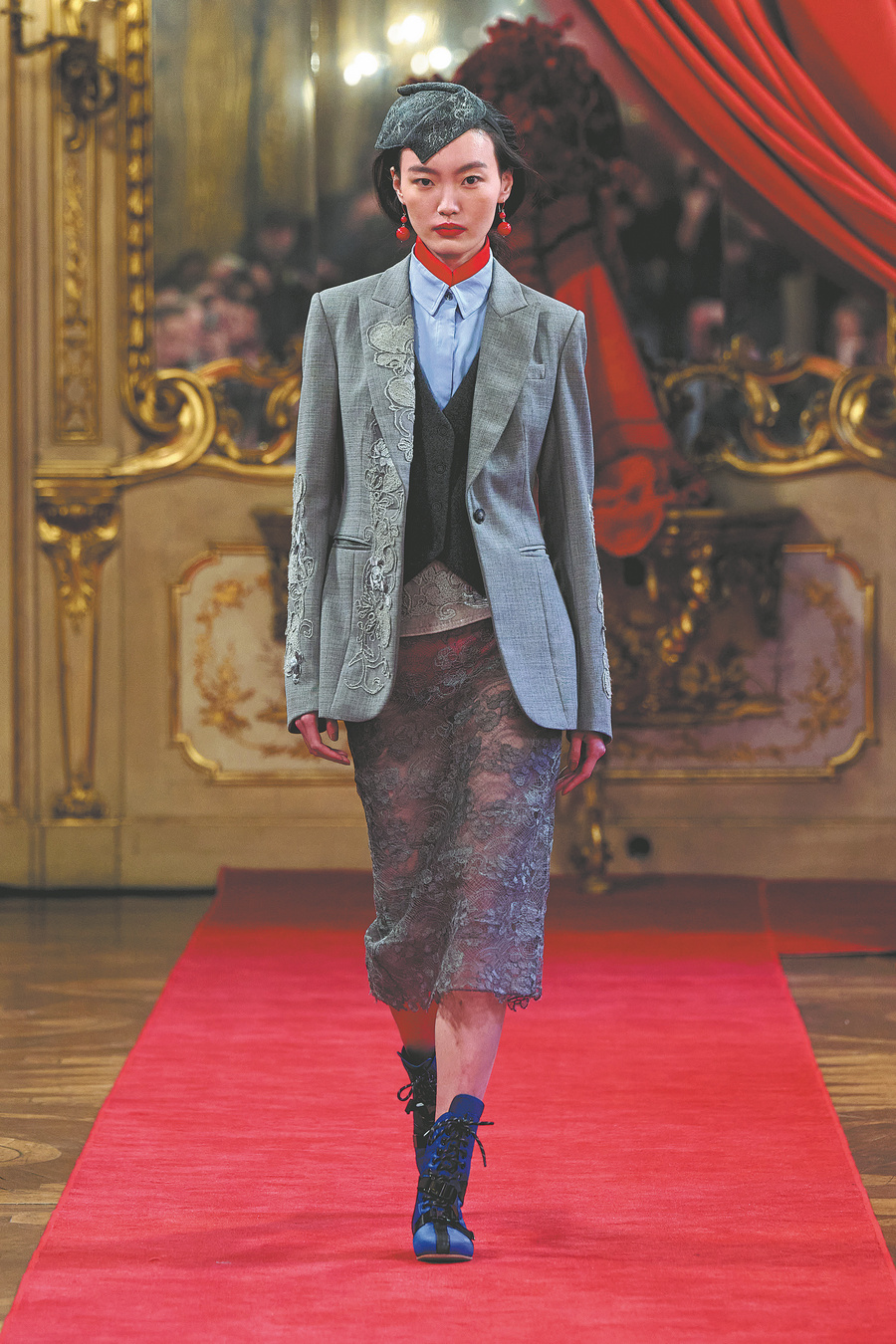
A runway model wears HUI's Fall/Winter 2025 collection. CHINA DAILY
Chinese designer Zhao Huizhou's brand HUI unveiled its Fall/Winter 2025 collection Aurora, which draws inspiration from the stunning Miao embroidery.
Miao embroidery is a national intangible cultural heritage in China. And the Miao ethnic group, mainly from Southwest China's Guizhou province, is well-known for the exquisite embroidery on their costumes.
The designs for the collection drew from this cultural heritage and looked back to when humans were far from knowing the science of cosmology when deities were seen as the rulers of the universe. Imagining how and why the sun rises and sets was deeply rooted in many cultures.
In Roman mythology, Apollo was the sun god while the solar deity in ancient Chinese mythology was Xihe, who drove the carriage that transported the sun.
Whether in the East or the West, people shared a reverence for the source of light, which inspired Zhao's Aurora collection, that was unveiled in early March during the Milan Fashion Week.
Sunlight is a universal symbol of hope, mending the broken, and cleaning the mist, Zhao says.
Embodying an image that resonates across cultural boundaries in its chic design is just one hallmark of her brand HUI.
Something that has remained refreshingly consistent throughout Zhao's 10 years of appearances at the "Big Four" (Paris, Milan, London and New York) global fashion weeks is her ongoing interest in China's time-honored cultural legacy. This time, her work features Miao embroidery.
Working with needles and thread, embroiderers adorn clothes with designs of natural phenomena, mythical creatures and ethnic history, which all reflect the world-views, values and aesthetics of the Miao people. Miao embroidery is often considered "the Miao epic worn on the body".
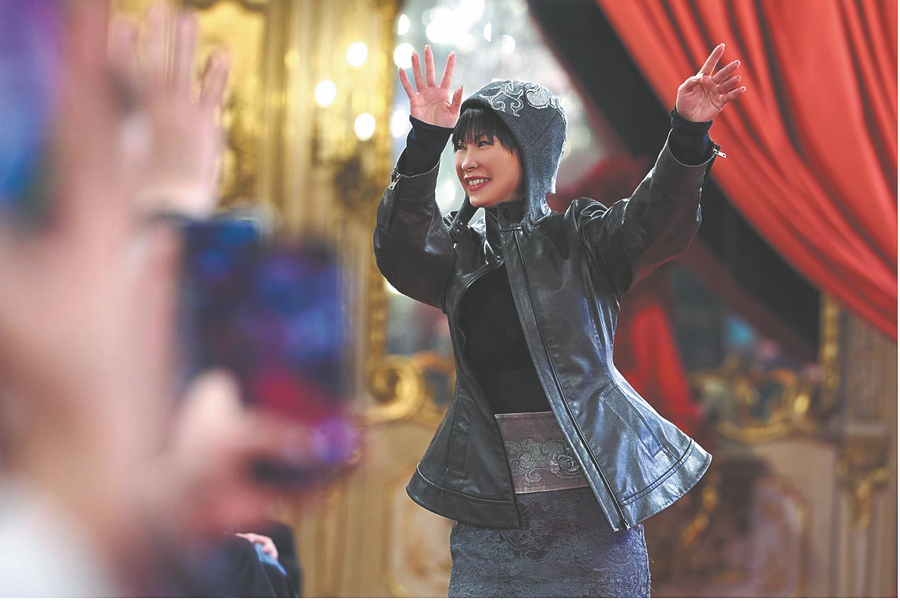
Designer Zhao Huizhou, founder of HUI. CHINA DAILY
For example, the Mother Butterfly pattern echoes the Miao legend in which one egg among 12 laid by a butterfly hatched into Jiangyang, an ancestor of the Miao people, and the Mother Butterfly is worshipped as the Miao's most venerated god.
For the runway, Miao patterns featuring the sun, seas of clouds and dragons are woven into dark blue fabric, evoking the vastness of the universe. The bold use of contrasting colors, such as vibrant orange, symbolizes the breaking dawn.
Light takes on many shapes and in some ready-to-wear pieces, embroidery is stitched into lightweight, translucent organza that mimics the rippling effect of sunlight filtering through the clouds.
Another highlight this season is the collaboration between HUI and Guizhou Textile Industry Development Group. Eleven jacquard dresses showcase the art of Miao brocade, which employs several interweaving techniques using warp and weft to create intricate designs.
The textile group, which was established last July, aims to lead the development of a competitive textile industry chain in Guizhou. It also seeks to explore opportunities for the global promotion of locally produced clothing, household items, wearable jewelry, and more, which all inherit the province's distinctive culture while embracing modernity.
"The redesign of our intangible cultural heritage is a concrete step in leveraging Guizhou's strengths in developing boutique manufacturing, rooted in its rich diversity of ethnic cultures, and ensuring the enduring legacy of China's traditional craftsmanship," says Min Jiangtao, vice-chairman and general manager of Guizhou Textile Industry Development Group.
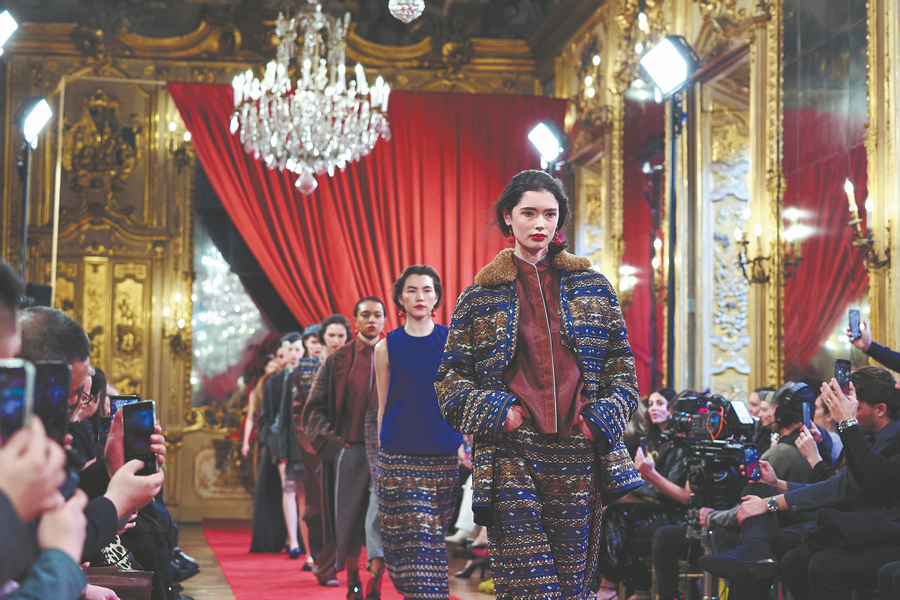
HUI's Fall/Winter 2025 collection is unveiled on March 2 at the historic Clerici Palace in Milan, Italy, during Milan Fashion Week. CHINA DAILY
Uncovering stories
Reinterpreting the classics in a modern way is no easy feat.
"It needs wholehearted dedication to truly experience, understand, and uncover the stories behind the heritage — conducting field visits, engaging with local artisans, and looking for an appropriate way to present these cultural elements to the global market," Zhao once told the Chinese edition of a US fashion magazine.
During the development of the new seasonal collections, Zhao's team and co-workers spent two years in Guizhou, immersing themselves in Miao history.
Along with the runway show, a workshop that combines Miao embroidery with art therapy captured a lot of attention. Miao embroidery inheritors Long Luying and Long Ting, along with Chinese artist Yuan Yuan and Le Sciure, a Milan-based social welfare group for elderly women, wove red threads onto fragments of ancient Chinese ceramics.
Broken pieces were given new life as they were transformed into artworks that embody collective memories and hope.
"It is the moment when fashion brings us together," says Zhao.
The project is another attempt led by Zhao's Hui Foundation, which was founded in 2016 to support Chinese folk artisans in overcoming poverty and promoting handed-down craftsmanship.
All efforts have been made to revitalize time-honored traditions, says Zhao.
"As a designer from China, I think about the origin of my designs. It's rooted in my culture and I think this culture is more about inheritance," Zhao says. "The aesthetics of intangible cultural heritage are not mere historical relics but a language of the future."
Contact the writer at zhengwanyin@mail.chinadailyuk.com

A runway model wears HUI's Fall/Winter 2025 collection. CHINA DAILY
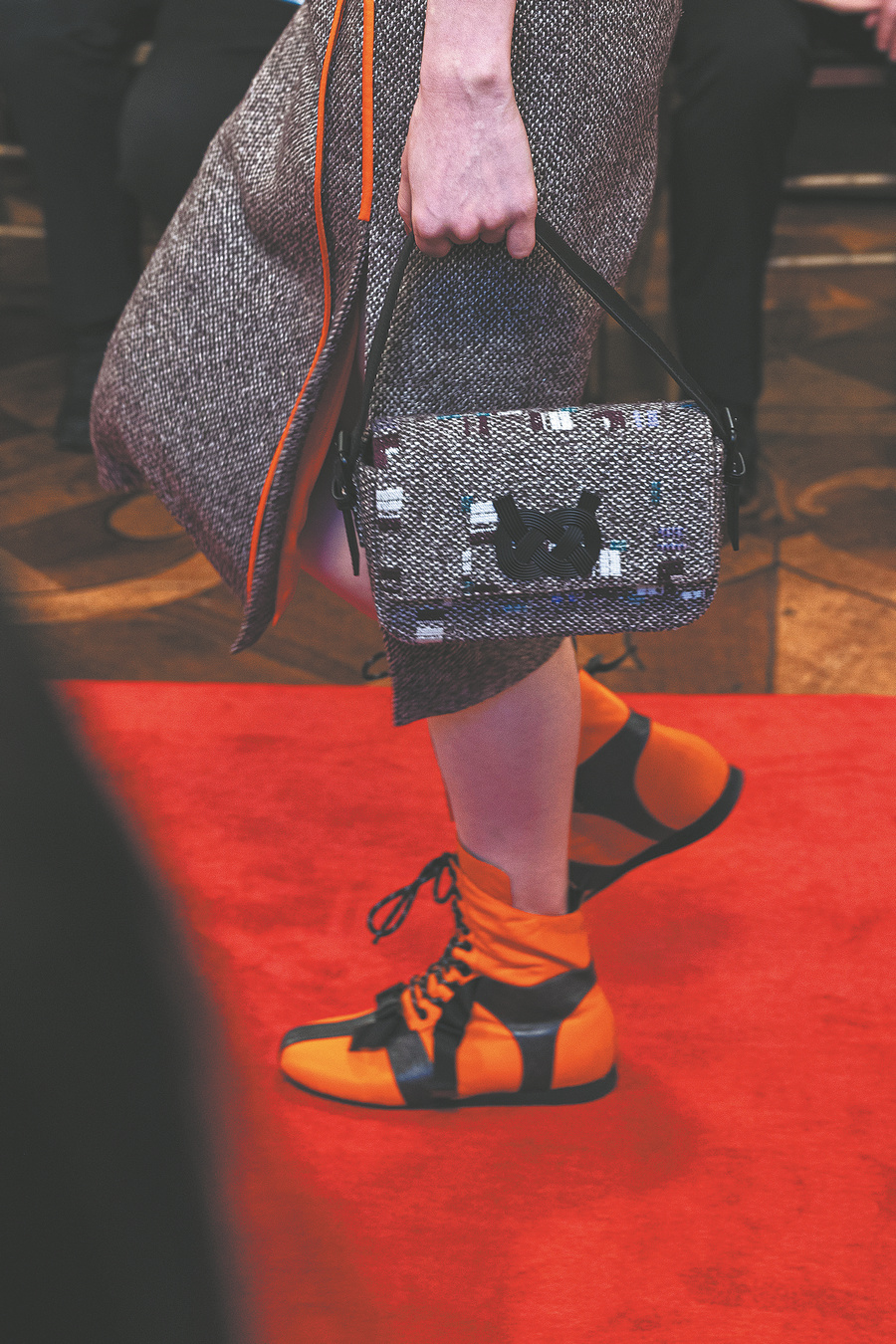
Details of Miao embroidery on a handbag. CHINA DAILY
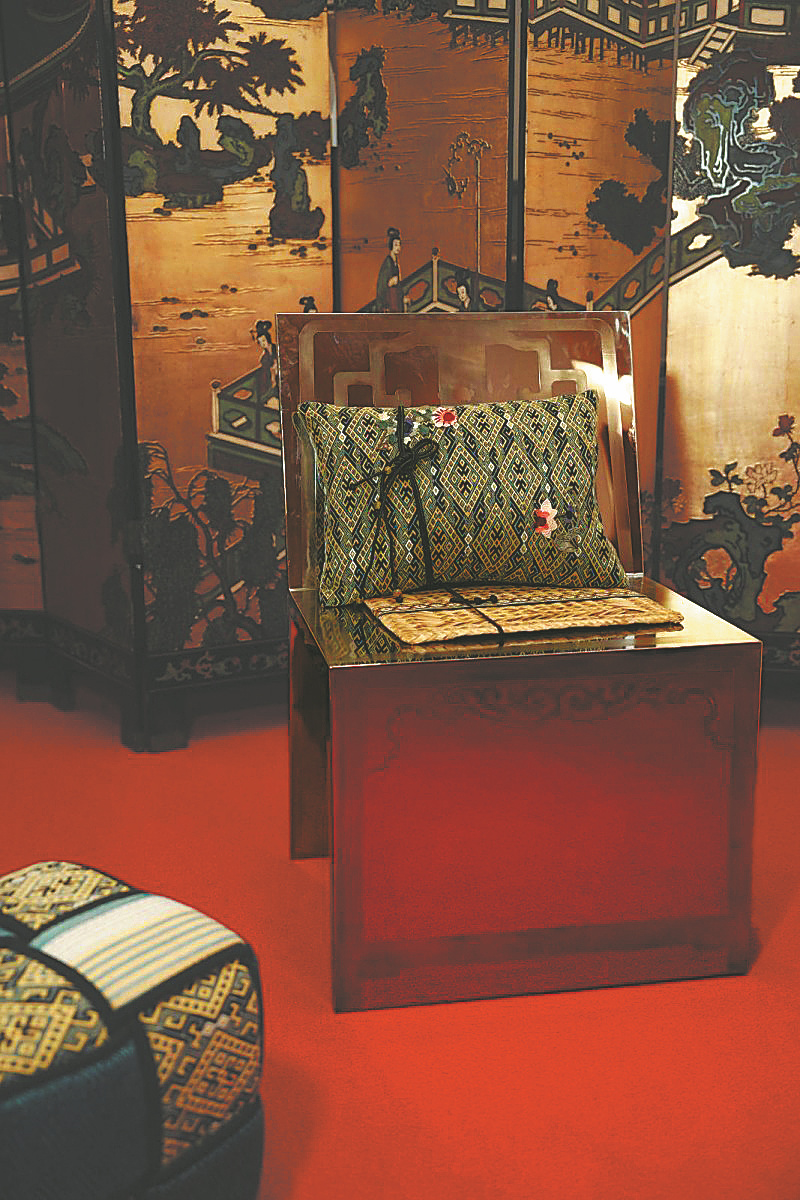
Lifestyle goods by the Guizhou Textile Industry Development Group incorporate Miao aesthetics into household items. CHINA DAILY